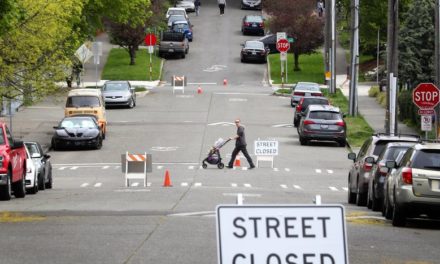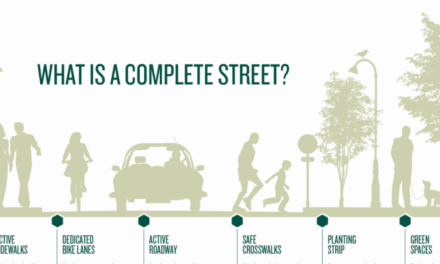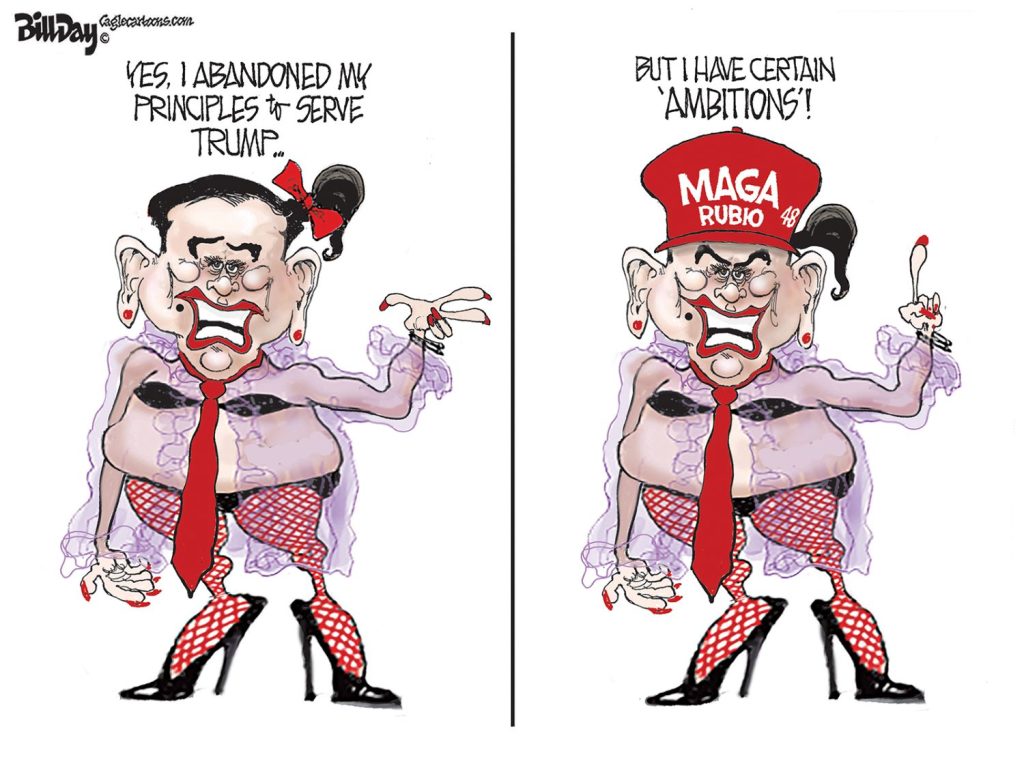From Atlantic Cities:
For a vivid illustration of the publicly financed project that’s been dividing the city of Nashville for months, take a drive down Mayor Karl Dean’s street in the affluent Green Hills neighborhood. There, a lone “AMP YES!” lawn sign is perched in the mayor’s yard. A short spin down the same street, however, and signs broadcasting the reverse view — “STOP AMP” — are replete. Standing on wood frames and far larger than the supportive placards, the signs are nearly as ubiquitous as the historic Cape Cods that fill the neighborhood (they’re also, it turns out, being bankrolled by one of Nashville’s biggest auto dealers).
The Amp, a referential name in Music City, is the $174 million bus-rapid transit project proposed to link the western stretches of the city to East Nashville over a 7.1-mile span. It’s the first in-earnest attempt at reliable mass transit in Tennessee, and it has been pitched as a way to keep pace with peer cities like Austin and Charlotte. Nashville is poised to add a million more residents in the next two decades, further snarling already-jammed travels along the busiest corridors. The hope is that the Amp, running in a bus-only lane and with priority at traffic signals, will, over time, help unclog commutes and improve quality of life.
City planners have been plotting the project since 2008, embarking on fact-finding missions to places that have had transit success stories, such as Portland and Cleveland. Now, the Amp is in its final stages. In late September, Nashville sent federal officials its application for $75 million in funding for the project, and they’re expecting a final answer on Tuesday.
Detractors include residents from North Nashville, a mostly lower-income African-American neighborhood, who feel like they’re being left out and would prefer to see increased regular bus service in their community. (One state representative even threatened to sue city officials if North Nashville is not more integral to the project.) Fiscal conservatives, of which Nashville has plenty, say the project is an example of government largess. And then there are the residents in and around the mayor’s neighborhood, whose traffic and parking concerns have been rolled into an increasingly fraught class war.
Back when public debate over the BRT first started heating up in fall of 2012, a West End resident actually told a transit planner at a public hearing that “we don’t want the riffraff from East Nashville in our neighborhood.” Another homeowner said an influx of “burger-flippers” into the western precincts was a worry, prompting one East Nashville merchant to propose a T-shirt idea: “Burger flippers for the Amp.”
For Nashville, the backlash calls to mind a recent battle over the planning of the city’s half-billion-dollar convention center, which opened in May, and was a cornerstone of the administration of Dean, the second-term Democrat who has the support of the chamber of commerce and the business community writ large. Some residents and elected officials derided the project as a publicly funded gift for tourists. A similar line of attack has been heard over the particular route planners chose for the Amp.
“This bus gets the tourists from downtown to the nicer restaurant/bar district,” as one elected official recently put it. “The concept is: we’re not building a transit system for Nashvillians. We’re building a fun bus to run tourists out to West End and the cool bars.”

The planned Amp BRT line route. (Courtesy Nashville MTA)
Malcolm Getz, an economist at Vanderbilt University and a lightning rod of the opposition, has tried to make the case that the Amp’s route, which starts in a gentrified East Nashville neighborhood, crossing the Cumberland River before coursing its way up the densely developed West End Avenue, was chosen to benefit landowners, who are banking on increased land values and more development.
But Jason Holleman, a city councilman who supports public transportation but whose western district includes some of the loudest naysayers, counters that in reality, the route was chosen to serve areas with the highest commercial density, including the city’s two largest employers, HCA and Vanderbilt University.
Few Nashville commuters opt for public transit. According to Census statistics, less than 2 percent of Middle Tennesseans take public transportation to work, with some 80 percent getting there by car. By contrast, in Portland, Oregon, a city roughly the same size as Nashville, an estimated 12 percent of residents use public transit for work commutes. Meanwhile, Nashville’s traffic congestion woes keep getting worse.
Opinion polls on the Amp have offered mixed results. One survey, funded by a Rockefeller Foundation grant aimed at boosting transit support, found that around 77 percent supported the Amp after surveying 500 registered voters. In another survey conducted by the Nashville Business Journal in which 2,200 participated, the results yielded an almost 50-50 split. Anecdotally, support appears to be tied to where residents reside, with the East-West divide coming up again and again.
“Certainly in a car-dominated culture, it’s harder to sell the concept of mass transit,” says Annie Weinstock, a researcher with the New York-based Institute for Transportation and Development Policy. “American cities are still not comfortable with the idea of BRT because the concept hasn’t really permeated yet in the U.S. But it’s slowly starting to change.”
As Nashville works its way through the Amp, Chicago; Arlington, Virginia; and Seattle are all planning or expanding BRT lines. Nashville planners say a big part of the reason it has taken this long for them to plan a major transit project is that dedicated funding for public transportation is nonexistent, making large transit projects reliant on competitive — and in Tennessee, unpopular — federal support. (To make matters worse, a state senator recently threatened to block any state funds from being used for the Amp).
“I think a missing piece of the overall story of the Amp is that it’s not an endgame, it’s a catalyst,” says Freddie O’Connell, who sits on the local transit board. “Nashville’s in the middle of a moment, and we can either seize the moment and solve problems intentionally or let the problems multiply as we do nothing and watch our moment recede.”





This reminds me of Atlanta and some of the same arguments are used to keep from expanding an inadequate MARTA. They are afraid of the riffraff from Atlanta coming to their suburbs which will increase crime. Of course we all know that those inner city criminals will take the train to affluent suburbs to rob and kill and then hop back on the train to go back home.
In the meantime, Atlanta has the worst traffic congestion in the country. Nashville is heading their way though.
Tough situation in Nashville. It largely depends on the purpose of this route. If the purpose is to capture long distance drivers once they have arrived in the local area, then it might be a tough sell. If the purpose is to allow for increased density along the route then success will depend almost entirely on land use planning along the route.
Looking at the proposed route, it appears- at least superficially- that the opposition’s claim concerning the nature of this service (shuttling tourists and the middle management lunch crowd between venues) is not entirely without merit. I agree with Anon’s comment regarding class (and racial) undertones driving opposition, but Nashville’s issues are particularly acute. While Nashville’s metropolitan area is only slightly smaller (10%) than the Atlanta metropolitan area, it’s population is less than 1/3 that of Atlanta’s. At 230 people per square mile, Nashville’s average population density is only 1/3 that of Atlanta’s. This is an insanely low density for any metropolitan area. Creating and operating a mass transit system in such a location is extremely difficult. The proposed route terminates just east of downtown and a mile west of 440. While park & ride facilities are proposed where the route crosses major freeways, one must question whether these points are too close to likely destinations to be effective. In other words, having already spent 45 minutes driving from Kingston Springs or Lebanon to central Nashville, will I then spend an additional 20-25 minutes (parking, waiting for a bus, journey time and time walking to my destination) when it would likely take a similar amount of time (or far less) to simply continue to my destination in my own vehicle?
Personally my relatively uneducated gut instinct would suggest that creating a route that provided service to more distant suburban locations and park & ride lots with a dedicated bus lane or HOV lane might stand an improved chance at capturing more riders. Once again, it depends on the intended purpose of this particular proposal.